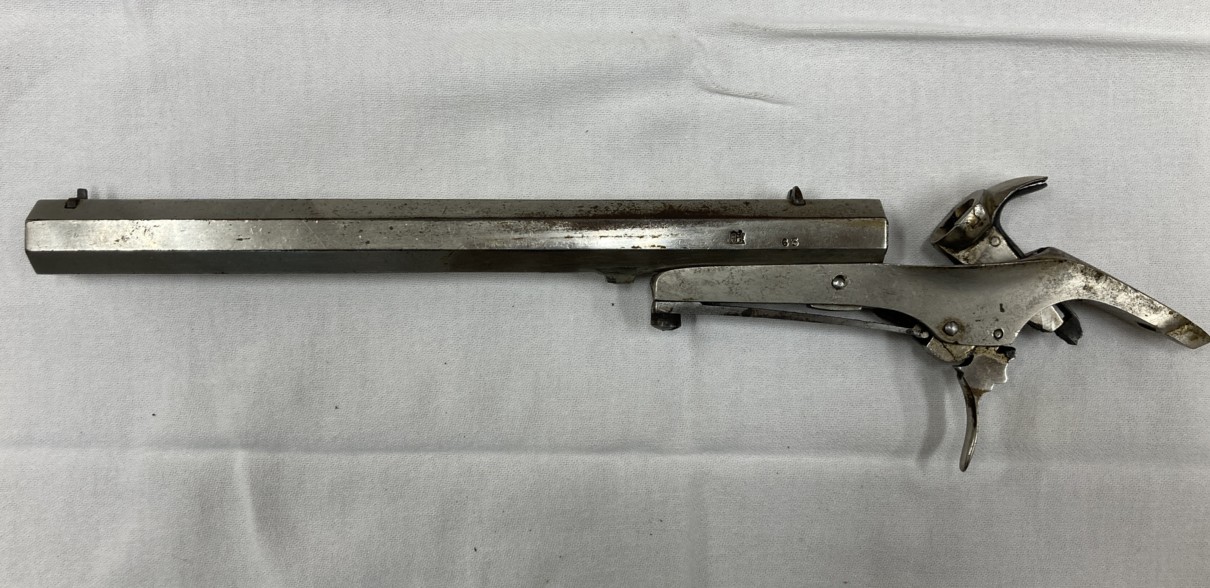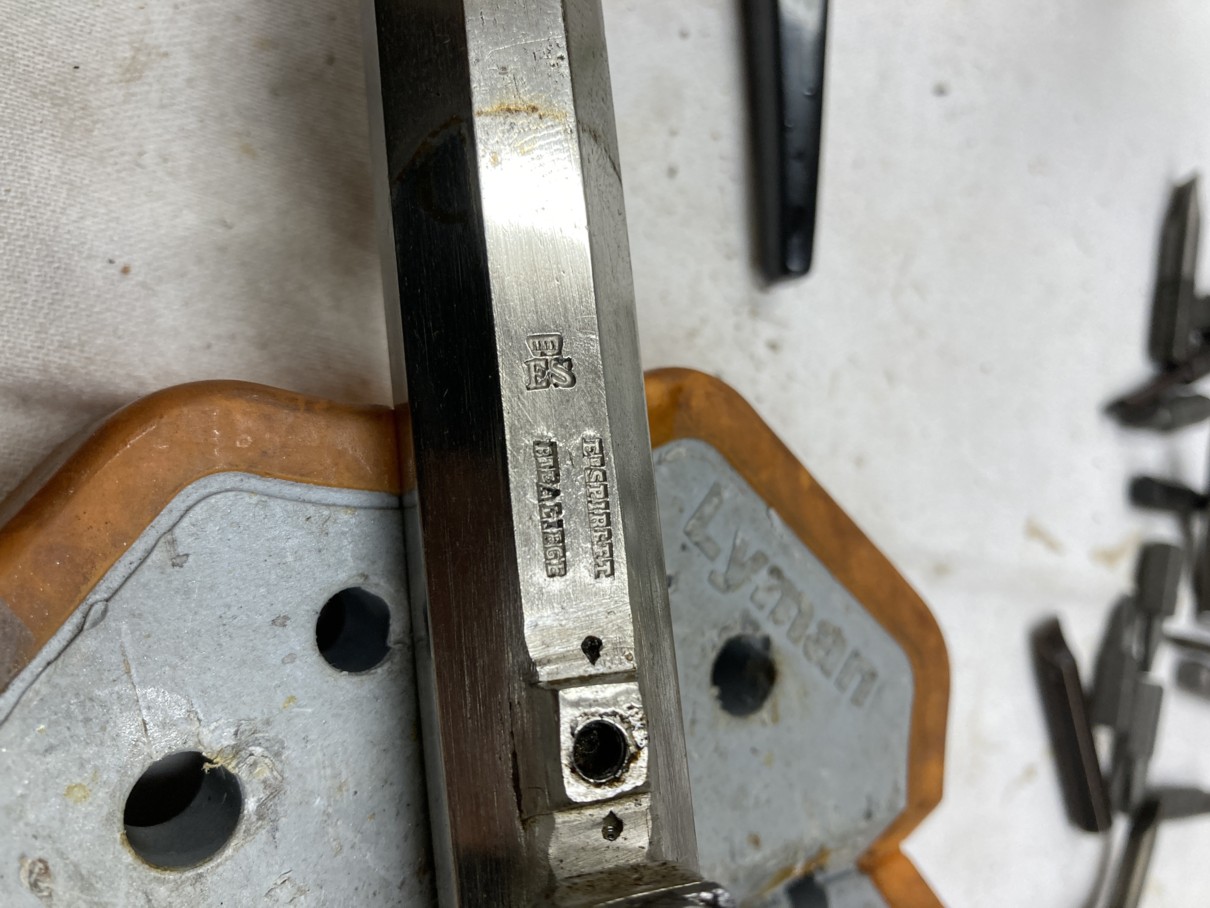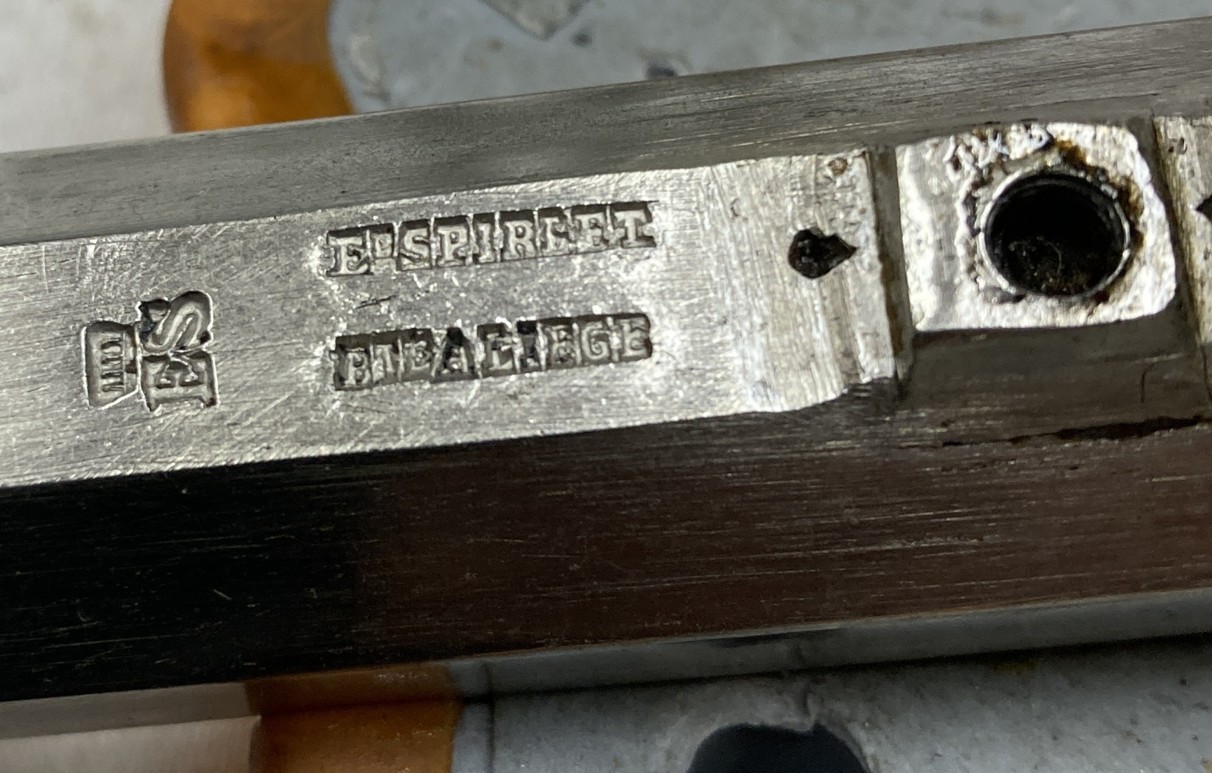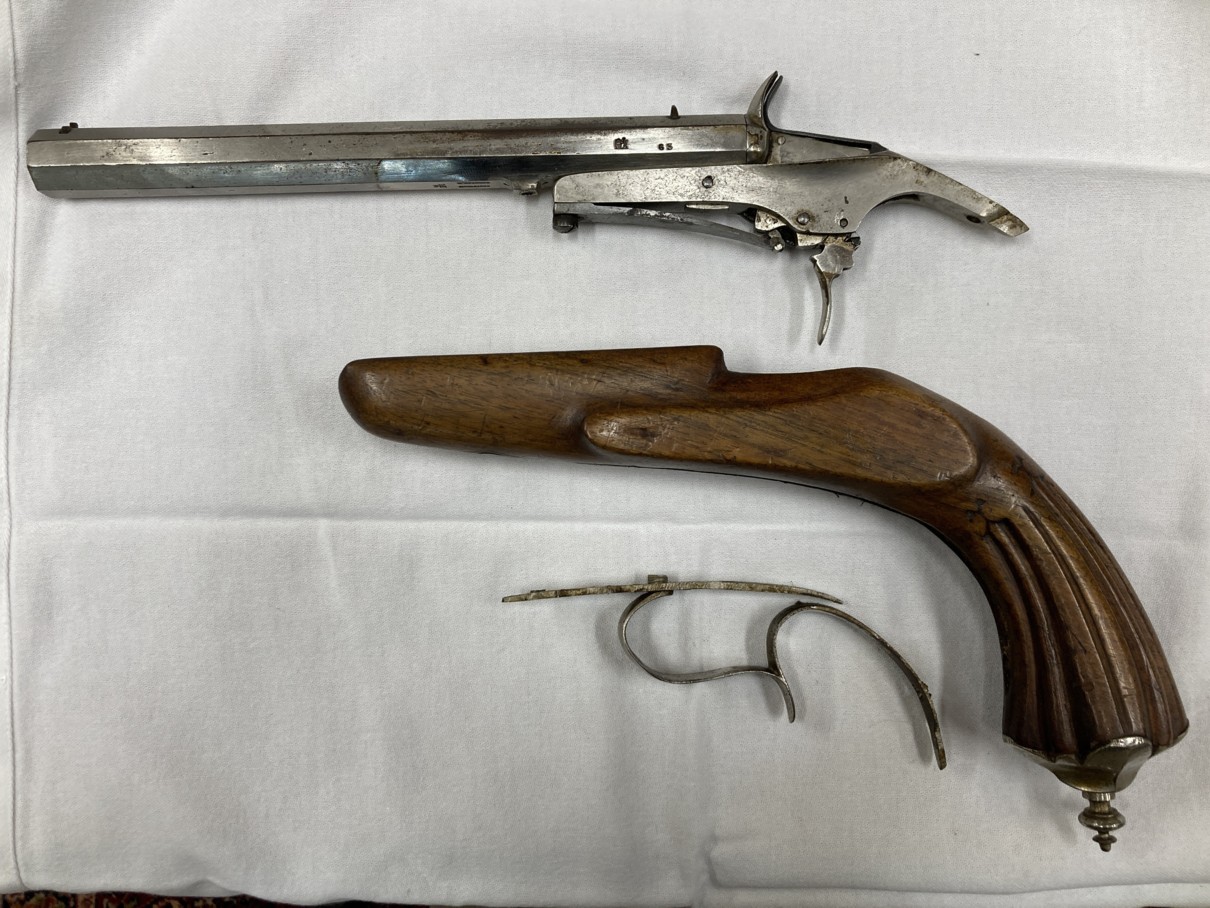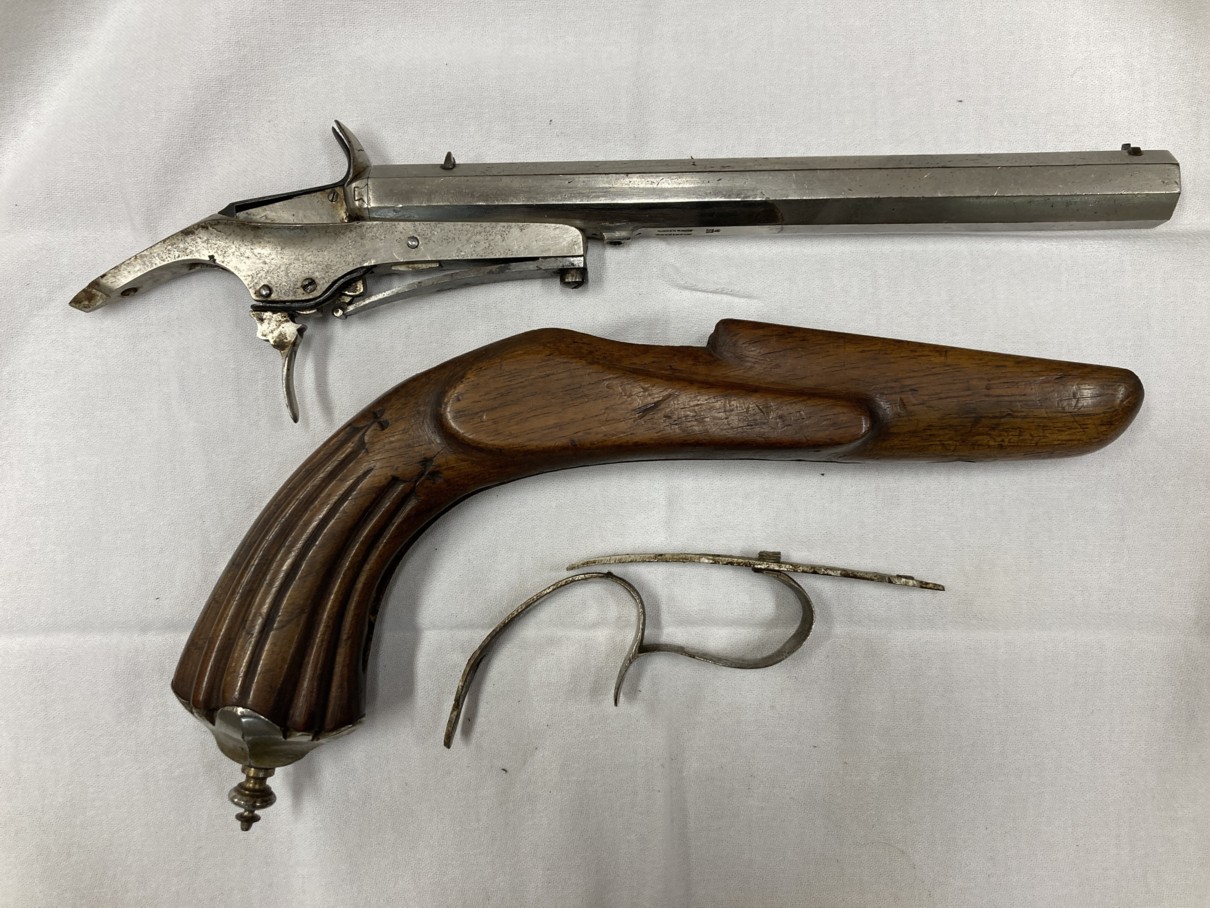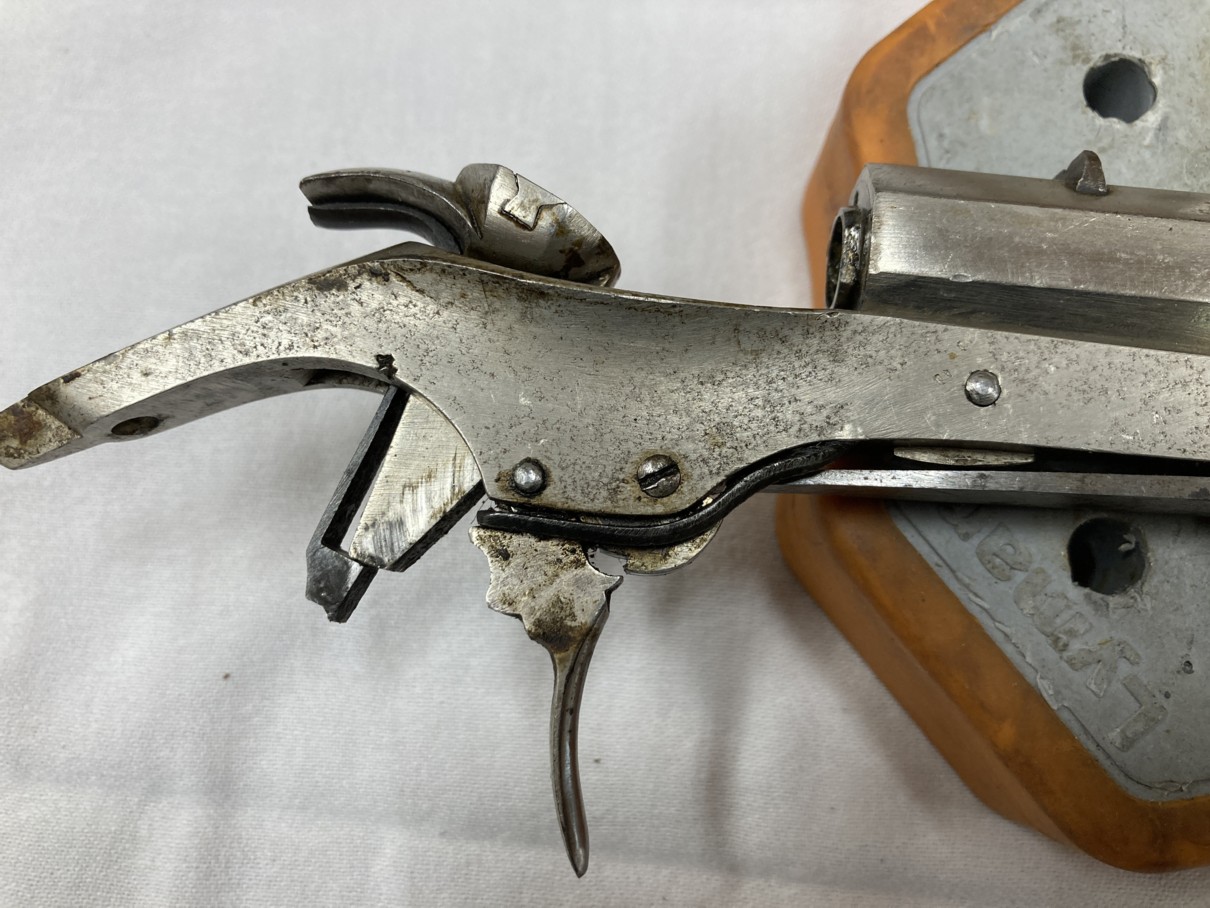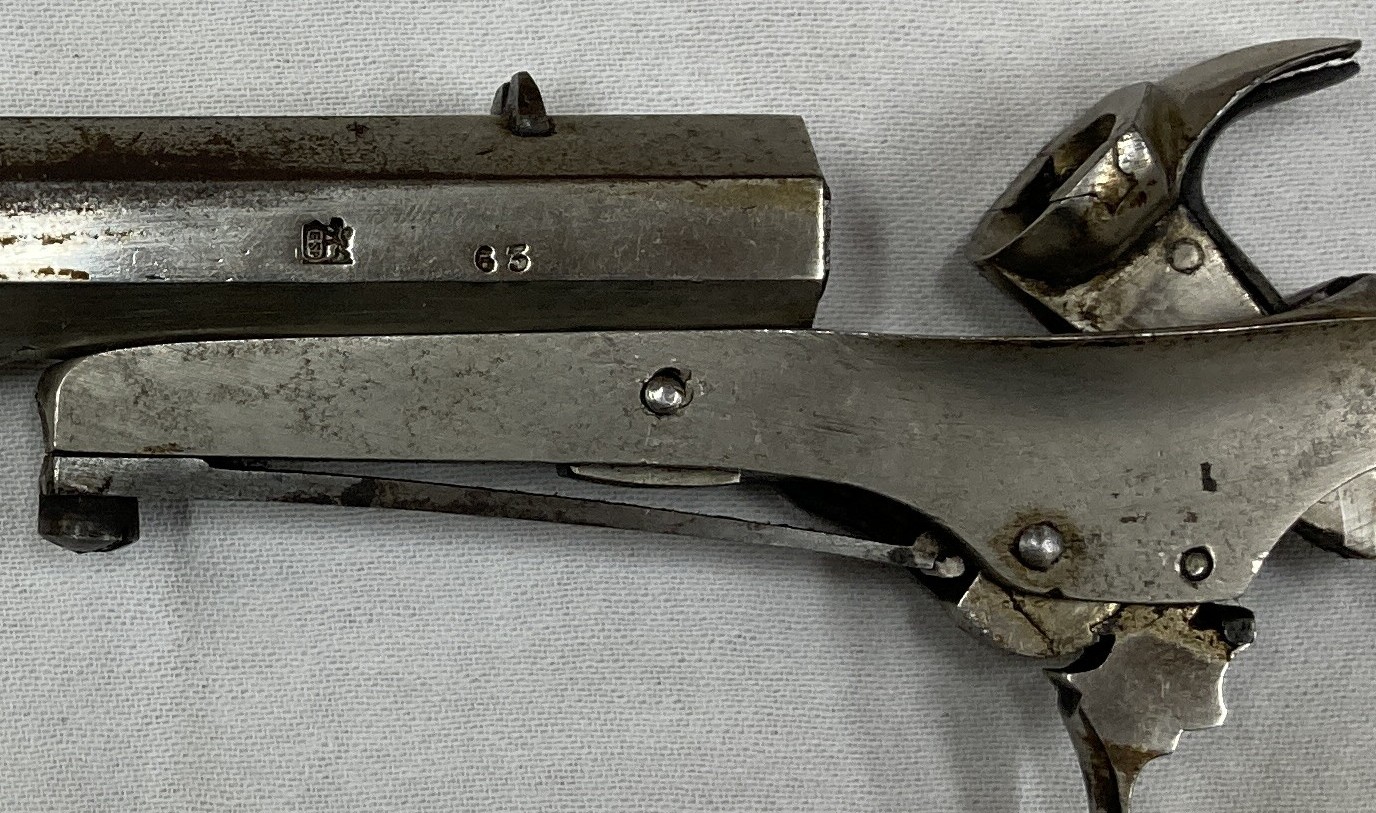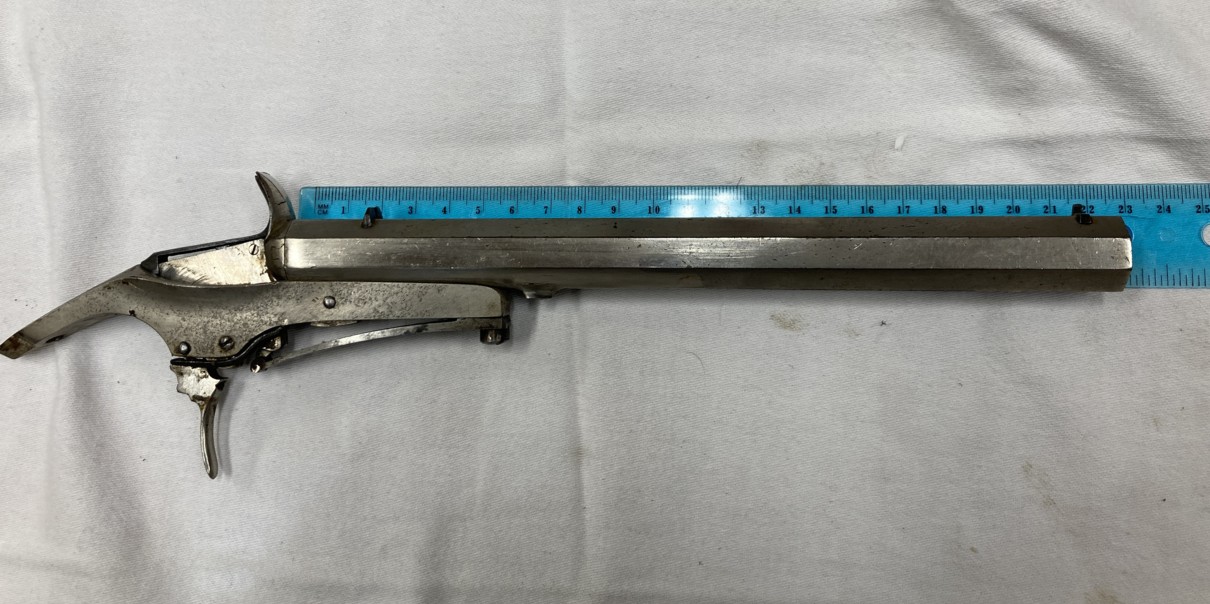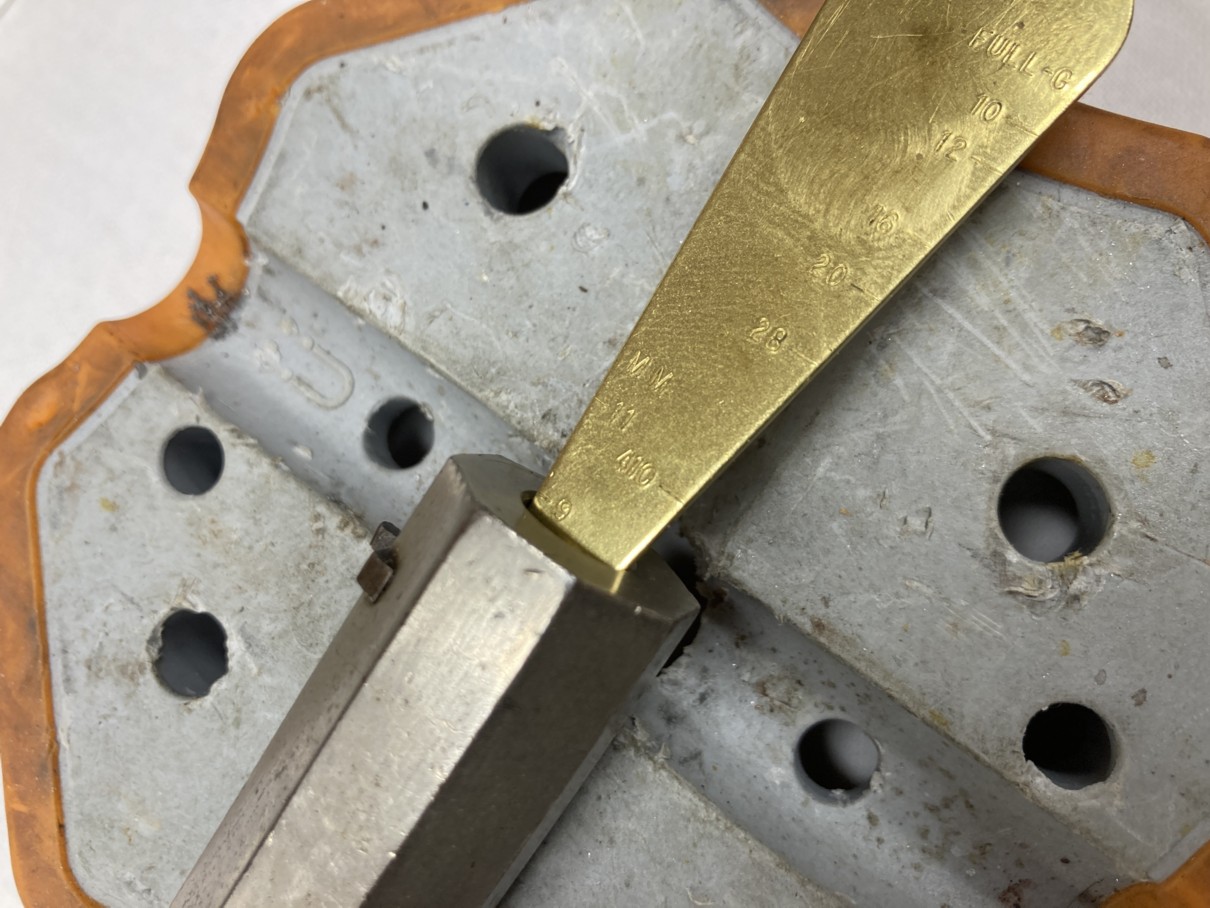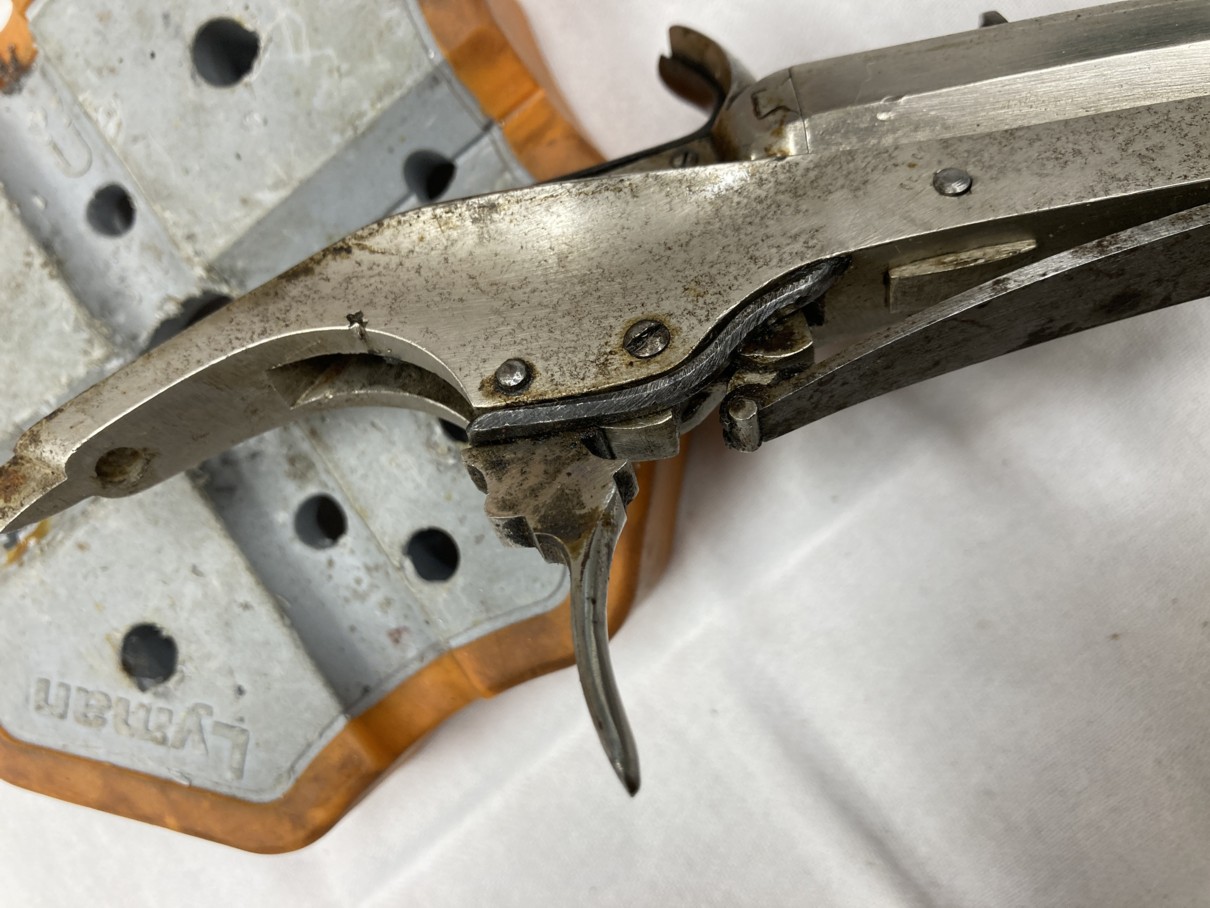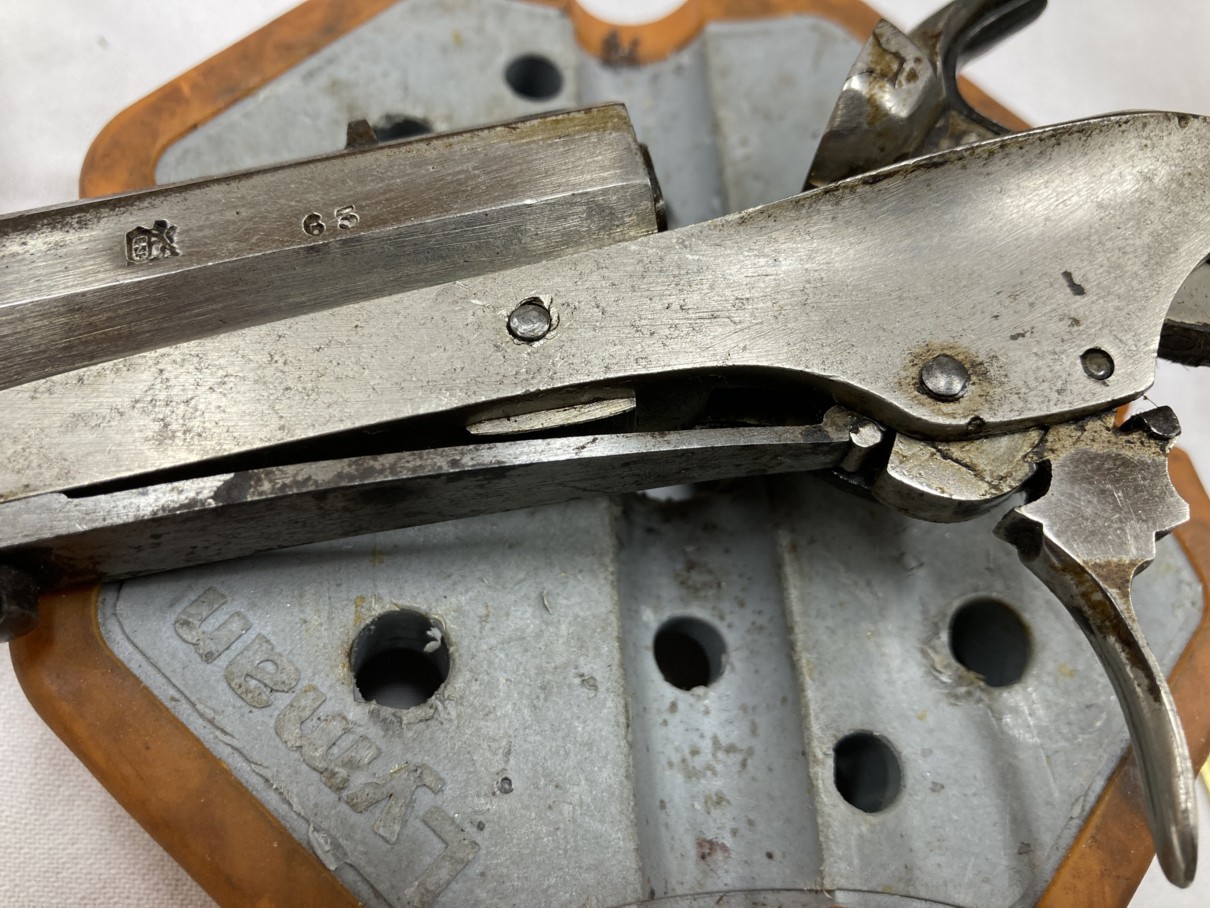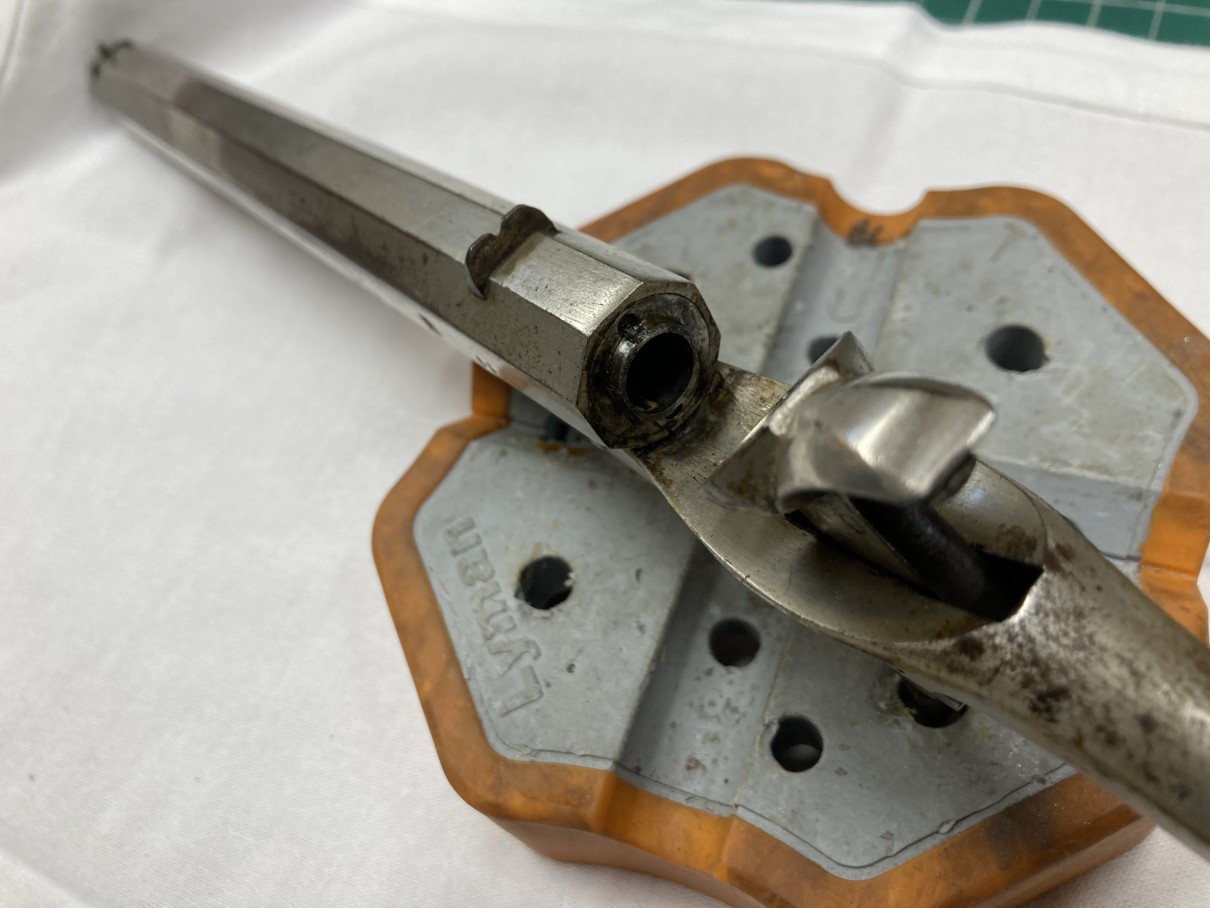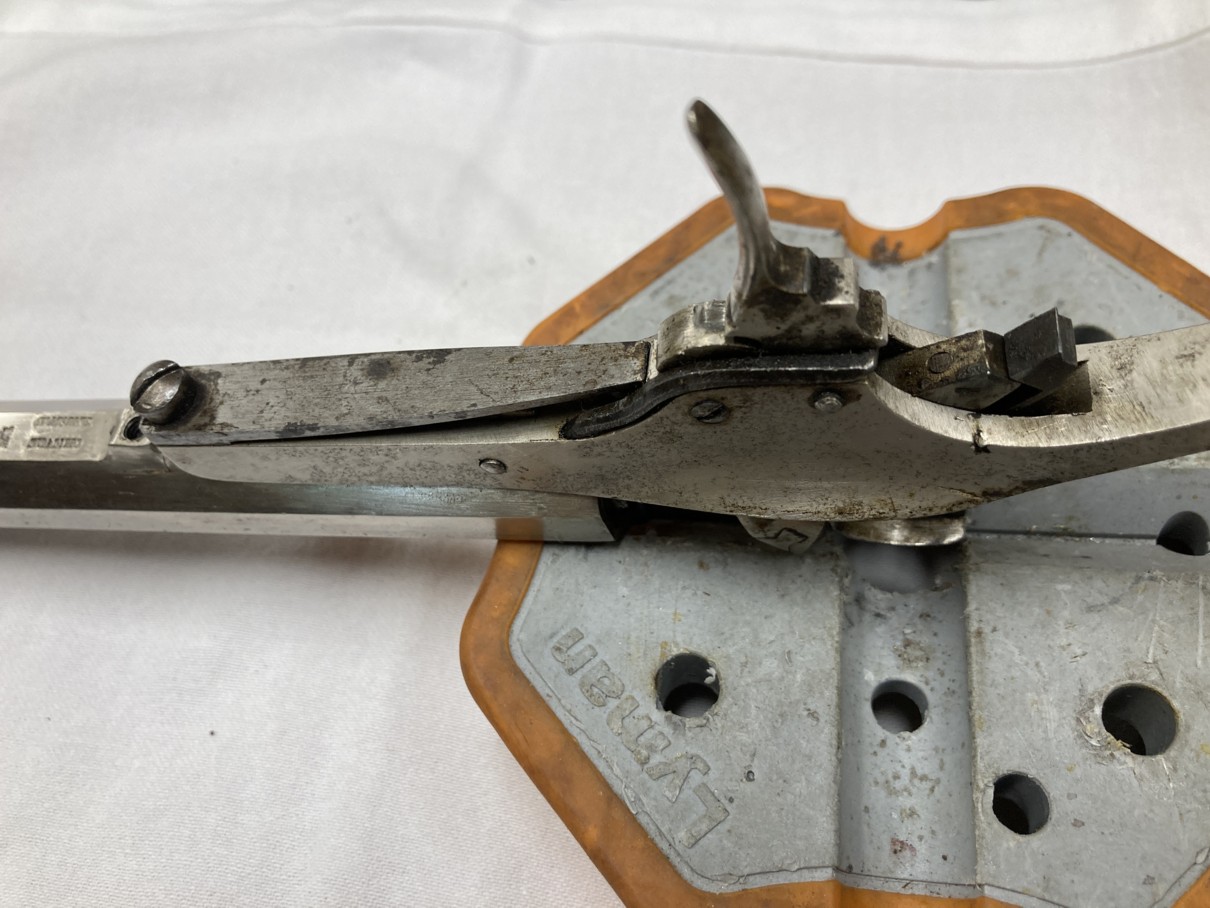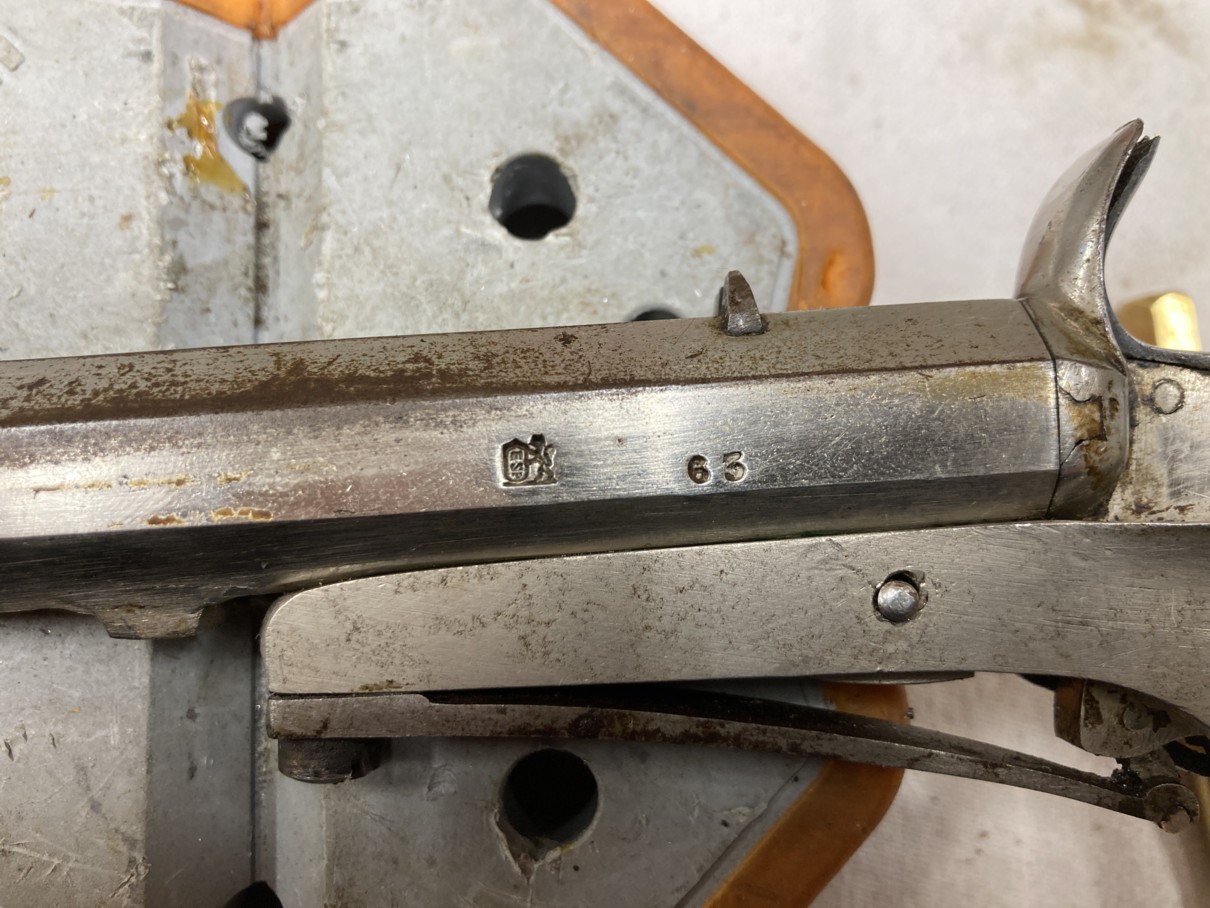Some of the most beautiful work of this craftsman, and many others, are in this book “Liège Gunmakers through their Work. 1800 - 1950”.
For more detail see: LIEGE GUNMAKERS
SPIRLET Edouard (Maybe)
The primary question regarding this pistol lies in
identifying its manufacturer.
The owner of the weapon provided a precise description,
the gist of which is reproduced below:
"This is a parlor
pistol using self-propelled bullets, with needle-fired percussion. Its caliber
is 6 mm, ..., the barrel is rifled, and the overall length is 34 cm. Regarding
the mechanism, ..., I decided against disassembling it due to the complexity of
the system. The lateral lever controls a flat toothed wheel, which meshes with a
longitudinal pinion, whose axis is threaded and thus rotates in the action
frame. Cocking this lever triggers two actions: - cocking the hammer, located on
the left, which is connected to the needle - retracting the threaded axis, which
is screwed into the barrel chamber to lock it. Once closed, pulling the trigger
releases the hammer for firing.
" The only marking is ES under an atypically shaped crown on the left
side of the barrel.
In terms of dating,
I can only place it from 1855, the date Loron filed the patent for the cartridge
in France, in collaboration with Gaupillat. The quality of the workmanship leads
me to believe that this is not a "tinkering," unless it was a specific order or
a master piece (?)."
It is indeed a beautiful pistol whose craftsmanship
appears to be of high quality, with its Renaissance-style grip, its trigger
guard with finger rest, and the scrolled engravings of the metal parts.
Information on the Loron system can be found on the
website, with a copy of the December 1854 patent and photos of a similar-looking
needle-fire pistol.
The only clue to identification lies in the weapon's only
marking, namely the initials ES under a crown. This could be the Liège gunsmith
Edouard Spirlet, who worked between 1840 and 1876, which is consistent with the
pistol examined here. The website has some information on this craftsman.
This hypothesis has not been confirmed so far, in the absence of any
other markings or indications, and must therefore be considered with caution.
Chris, HPH
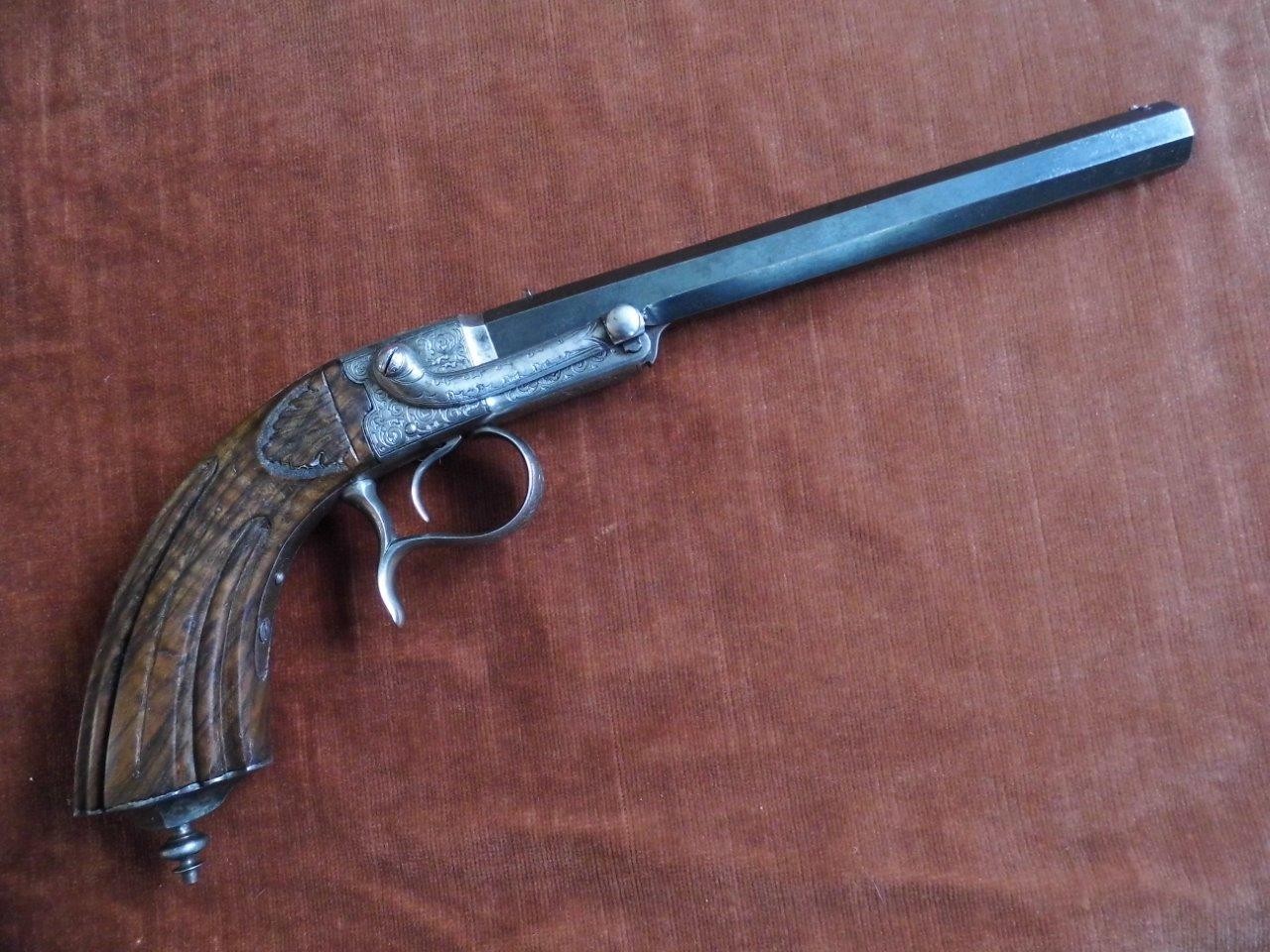



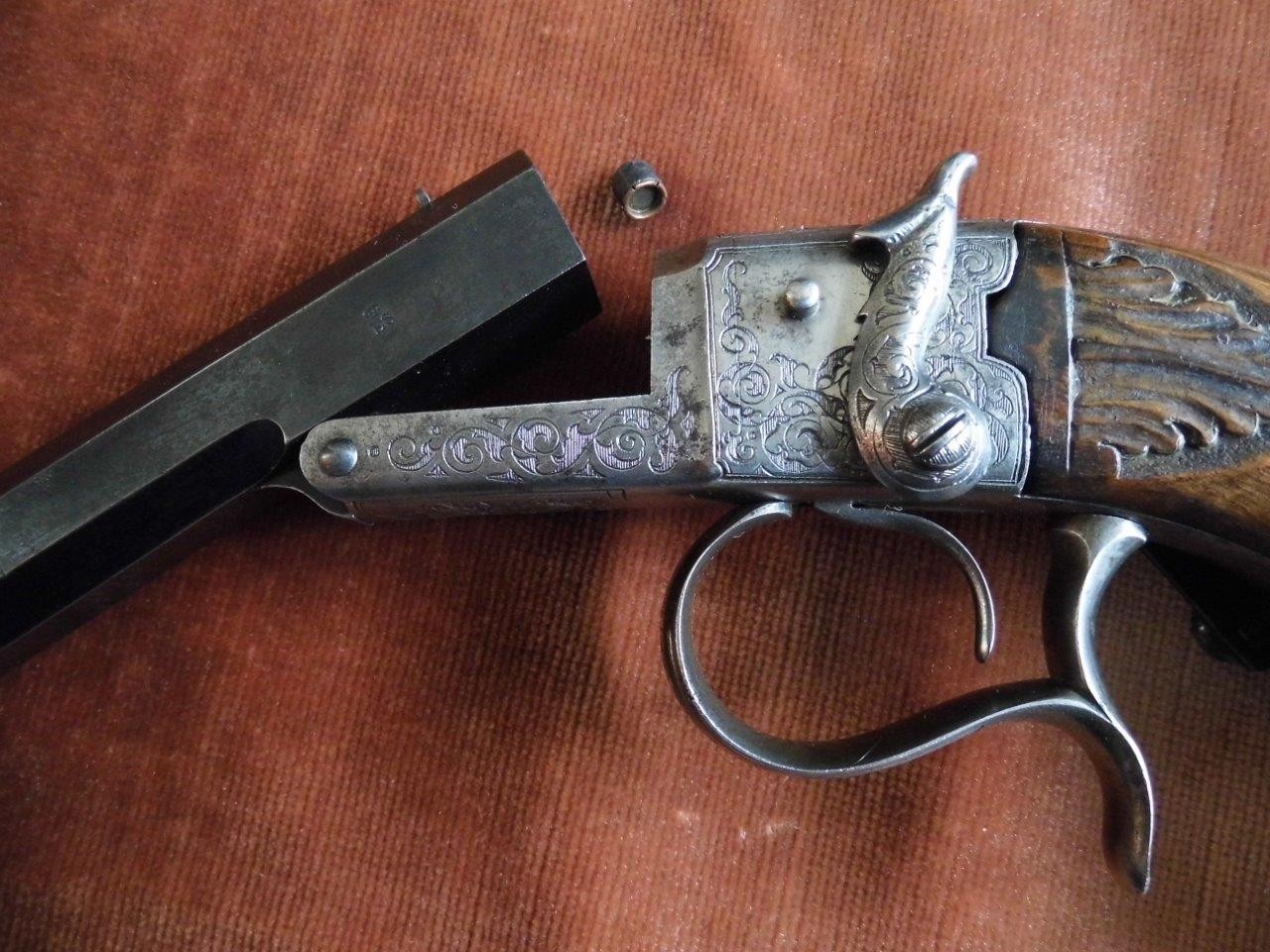




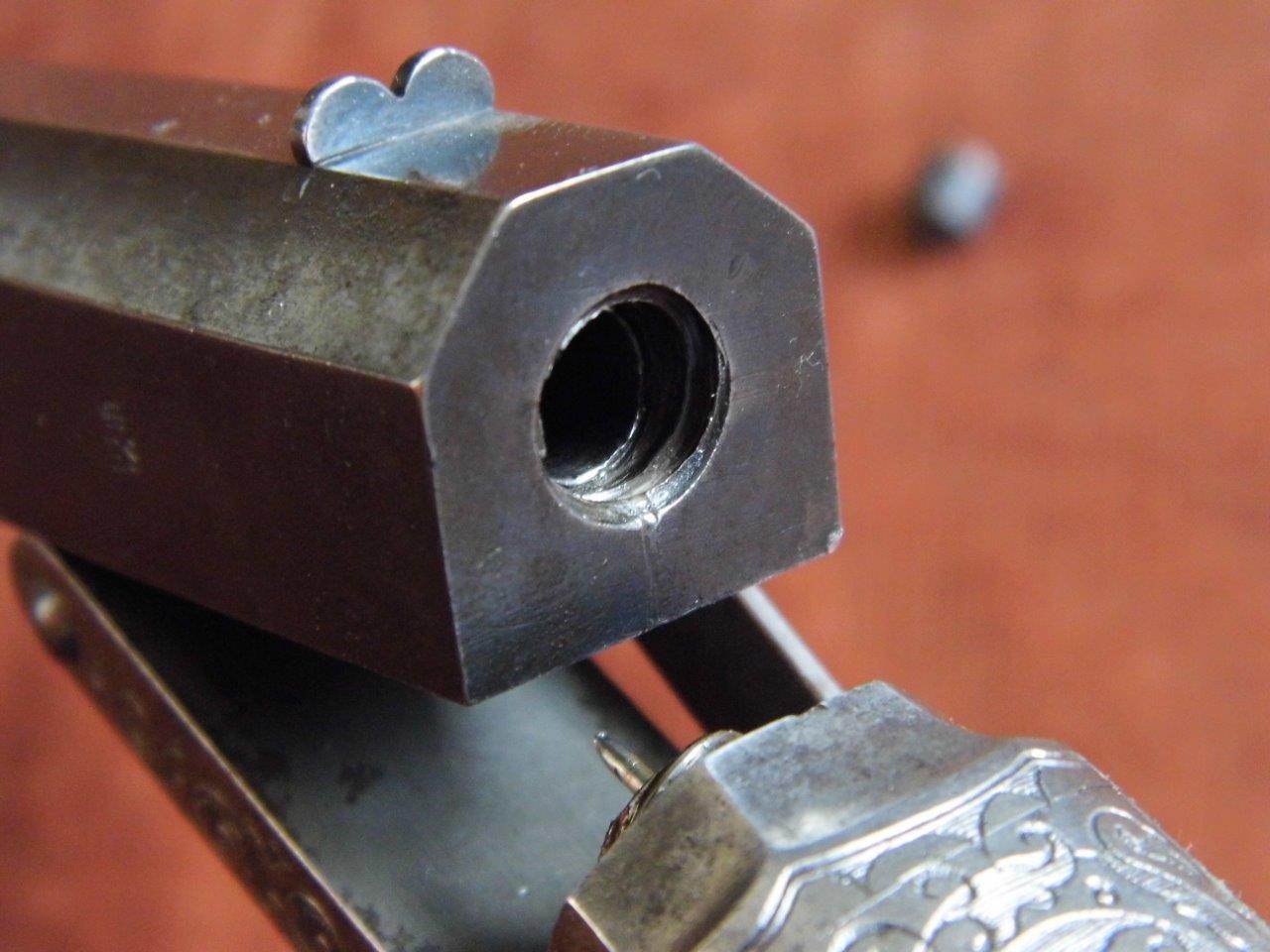
SPIRLET Edouard
This is a
pistol designed for recreational shooting at reasonable distances. This category
of single-shot weapons, chambered for Flobert rimfire ammunition, was all the
rage from the mid-19th century... until today, since the ammunition is still
produced today. Huge quantities of variations of this design were produced,
mainly in Liège by a myriad of craftsmen, and are generally classified in a
family known as "parlor pistols" or "garden pistols." Various calibers of
Flobert bosquets were used for these pistols; this one is chambered for 9mm.
This is a
fine example, with its Renaissance-style grip, finger-rest trigger guard, and
octagonal barrel.
Markings:
Number
63, serial number, left side of barrel.
E.
Spirlet Bté in Liège, with a logo representing the initials ES under a crown
(underside of the barrel, disassembled weapon).
Another
logo with the initials ESP in a shield held by a rearing lion, on the left side
of the barrel.
According
to these indications, the pistol was manufactured by Edouard Spirlet, a gunsmith
in Liège (1850-1876), who filed a series of patents, including two in 1864,
relating to modifications and refinements of the Flobert system mentioned on the
website.
The
following text can be read (by GP, excerpts):
"We are
therefore on the trail of a member of the Spirlet dynasty, perhaps Edouard, but
is it simply Edouard, or Edouard Père (BE 1847/1951)? … Both Edouard Spirlets
were active between 1850 and 1876....
In conclusion, this 9mm Flobert caliber parlor pistol is the product of a Liège gunsmith named Edouard Spirlet (with some uncertainty between the two namesakes).
There are no markings available to date its manufacture, but the design of
the weapon and the period of activity of the two manufacturers bearing this name
suggest production between 1865 and 1875.
Chris, HPH, Marcel

